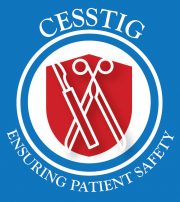High-level disinfection, sterilization, and antisepsis: Current issues in reprocessing medical and surgical instruments
March 17, 2021 2021-09-15 23:24High-level disinfection, sterilization, and antisepsis: Current issues in reprocessing medical and surgical instruments

High-level disinfection, sterilization, and antisepsis: Current issues in reprocessing medical and surgical instruments
Key Words
Manufacturers’ instructions for use
Manufacturers of reusable medical devices and surgical instruments must receive clearance from the Food and Drug Administration before the product can be made available for purchase and use in the United States. Part of the labeling claim process requires that manufacturers produce validated instructions for use (IFU) for reprocessing of the reusable device. The medical device manufacturer’s (MDM) validated IFU for each device must be provided in writing to the health care facility purchasing or borrowing these devices. The instructions should describe, in detail, the validated steps for disassembly, lubrication, cleaning, disinfecting, packaging, and sterilization.
Written recommendations from MDMs for reprocessing surgical instruments and medical devices should be on file and consistently followed by health care facilities.
Extended cycle times
Manufacturers of steam sterilizers validate their autoclaves according to specific cycles spelled out in American National Standards Institute (ANSI) and Association for the Advancement of Medical Instrumentation (AAMI) standard (ST) 8, Hospital Steam Sterilizers (see Table 1, Table 2).
This validation process does not include extended cycles; therefore, when facilities run longer exposure times to comply with MDM IFUs they are essentially performing an off-label use of the sterilizer.7
https://www.ajicjournal.org/article/S0196-6553(13)00019-9/fulltext
Related Posts
Flexible Bronchoscopes and Updated Recommendations for Reprocessing: FDA Safety Communication
Search
Popular Tags
Popular tags



